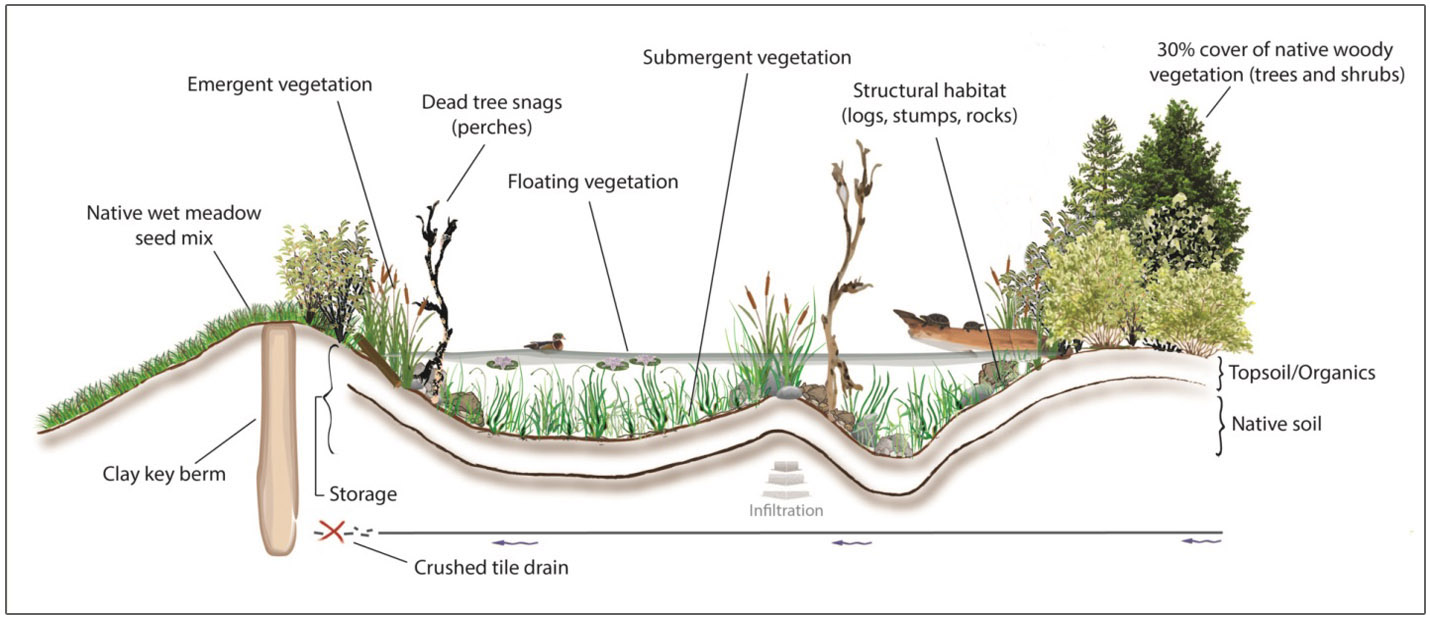WHY RESTORE WETLANDS?
Wetland restoration is vital to the health of our watersheds and communities.
Historically, the southern Ontario landscape featured an abundance of wetlands. With the growth of agriculture and land development, however, this has changed dramatically. The Toronto area alone has lost more than 85% of its original wetlands.
Wetlands today are additionally threatened by the hotter and drier weather associated with climate change, as well as the encroachment of invasive species.
The loss of wetlands has been a detriment to native fish, reptile, amphibian and bird populations. Once widespread, these species are now confined to smaller and smaller fragments of habitat.

The benefits of wetland restoration include:
- Increased biodiversity
- Increased wildlife habitat
- Improved habitat connectivity
- Flood attenuation
- Improved water quality
- Improved hydrologic function
- Improved base flow for watercourses
- Recreational opportunities (such as bird watching and fishing)
ABOUT WETLANDS IN THE GTA
Wetlands are areas that are seasonally or permanently covered by shallow water, or have a water table close to the surface. By retaining water and releasing it slowly, wetlands help reduce flooding and facilitate groundwater recharge.
Wetland plants take up pollutants, thereby improving water quality while also providing vital habitat for amphibians, reptiles and insects.
Four major types of wetlands are recognized in Ontario: marshes, swamps, bogs and fens. Each type is characterized by their its own distinctive plant and animal communities.

HOW IS TRCA RESTORING WETLANDS?
To mitigate the loss of wetlands and the ecological benefits they provide, Toronto and Region Conservation Authority (TRCA) strategically restores and creates wetlands throughout our jurisdiction, using desktop and field assessments to identify restoration opportunities (Restoration Opportunities Planning or ROP) and a planning tool called Integrated Restoration Prioritization (IRP).
IRP prioritizes restoration opportunities based on natural cover, hydrology, aquatic habitat, ecological heritage value, and connectivity in order to identify wetland projects with the greatest potential benefit — both to people and to plants and wildlife.
TRCA often creates wetlands on former agricultural lands, the marginal lands of current agricultural fields, and valley lands in urban areas. These projects usually involve the removal of tile drains and regrading the land to re-establish natural water drainage, or else to capture overland and outfall flows before they enter a watercourse.
Wetland Typical: Cross Section

TRCA WETLAND RESTORATION PROJECTS
Kortright Farm Wetland
The Kortright Farm Wetland was created on an old agricultural field that was once drained for crop cultivation. The field had been left fallow for decades, but the underground tile drains continued to drain the wetland.
The project restored the lost wetland, while farming was re-introduced outside the wetland area.
This project showcases best management practices (BMPs) on near-urban agricultural land where both conservation and agriculture can co-exist.

Corner Marsh
Corner Marsh is an 18-hectare lagoon within the Duffin’s Creek Coastal Marsh Complex in the Town of Ajax. Like many coastal marshes, it was experiencing a decline in emergent vegetation caused by fluctuating water levels and invasive species such as common carp.
In 2005, TRCA built a levee and installed a water control/fish passage structure. These measures allowed TRCA to restore emergent vegetation and reduce turbidity, thereby increasing the quality of spawning, nesting and rearing habitat for fish.

Contact
For more information, or to discuss your project and to arrange a site visit, please contact program staff: rcwp@trca.ca
